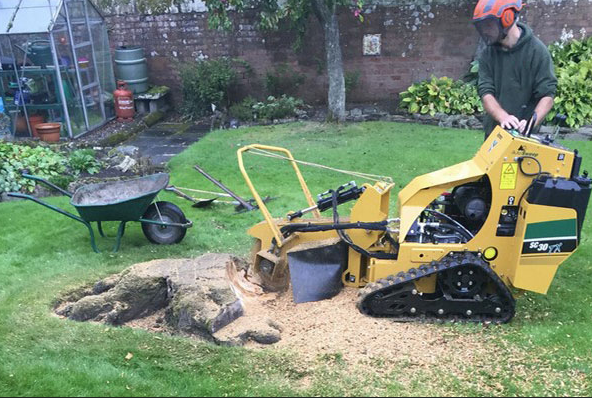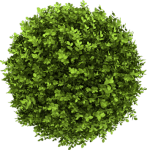
Removing a tree is only half the battle. What lies ahead is a massive stump that is unsightly to see and poses a safety hazard in your landscapes. Often, homeowners try to mow over it, but it is of no use as such annoying obstacles cannot be removed without proper tools and expertise. Moreover, these trunks also serve as breeding grounds for pests and termites, compromising the safety of your outdoor sanctuaries.
So, what would be the best method to remove tree a stump? Well, there are many and each comes with its own set of pros and cons. In this blog, we will about the best methods that you can choose to remove stumps according to your budget, timeline, and level of effort.
Why Removing a Tree Stump is Necessary
You might think having stumps in your landscapes poses no threat but in actuality can cause more problems than you can imagine.
- Tree stumps pose a safety threat to property owners as anyone can trip over it. By mowing it over, you can damage the blades of your equipment, causing costly repairs.
- It serves as an ideal breeding environment for termites, carpenter ants, beetles, and fungi. The pests can spread to nearby trees, plants, or maybe even into your home. Moreover, fungi and mold can also develop on the decaying wood.
- If not removed timely, it can sprout new shoots, leading to the growth of smaller trees. These trees become difficult to remove once the new roots establish themselves.
- Lastly, stumps decrease the real estate value of properties, makes your yard look unfinished or neglected, taking up space for future landscaping projects.
Methods of Stump Removal: Pros & Cons of Each
There are many types of methods when it comes to removing stumps. There is no one-size-fits-all solution but they have their pros and cons.
A. Stump Grinding
This method is the fastest way to get stumps. Arborists remove the stump using a rotating grinder and break it down into small wood chips. By using this machinery, they can reach the ground and ensure its total removal, making your spaces usable.
Pros:
- Fast – Only takes a few hours.
- Effective – Grind down most of the stump below ground level.
- No Chemicals – Safe for the environment.
- Allows Immediate Replanting– Fill with soil and plant grass or a new tree.
Cons:
- Quite Expensive – Renting a stump grinder costs anywhere between $100 and $400 per day.
- Requires Equipment & Expertise – Using a stump grinder is dangerous for a beginner.
- Leaves behind Wood Chips – You will need to dispose of or reuse the mess.
Best For:
- Homeowners who want a quick and effective solution.
- Large stumps that are impossible to remove.
B. Manual Removal
How It Works:
Although it is labor-intensive, but is a budget-friendly option for those who want to save money. All you need is a shovel, axe, mattock and chainsaw. First, dig around the stumps and cut its roots. Then you can start it and pull it out manually until your land becomes stump-free.
Pros:
- Inexpensive or even free, if the tools are already part of your possession.Eliminates the
- stump and the roots entirely.
- Chemicals or heavy machinery are not required.
Cons:
- Very labor-intensive; demands a strong physique and time.
- May take hours or days depending on the size of the stump.
- Not really suitable for larger stumps with deeper roots.
Opt for it if:
- Small stumps that can be worked with basic tools.
- DIY enthusiasts who do not mind the hard work.
C. Chemical Stump Removal
How It Works:
If you are a patient homeowner who can wait for months till their stumps go away, then this option is for you. This requires a minimal amount of effort and is a slow process. You need a drill machine to drill some holes in the stump and then pour over potassium nitrate (a chemical that removes stumps). Eventually, the stump will soften and decompose in about 3 to 6 months and break apart.
Pros:
- Minimum labor requirement– Just apply the chemical and wait.
- Cheap- Chemical stump removal costs $10-30.
- Good for old, dead stumps.
Cons:
- It takes months to rot the stump thoroughly.
- Not an instant solution if you need it fast.
- Potential environmental concerns: Some chemicals may harm the soil and neighboring plants.
D. Burning the Stump
How It Works:
Burning a stump is an economical yet dangerous route to take, requiring proper care. First, drill a few holes, then saturate the stump with kerosene or diesel. After allowing it to absorb and set for some days, light the stump, letting it burn slowly for hours.
Pros:
- Cheap and simple: Need some tools and a little muscle.
- Turns stumps to ashes completely.
- Only for dry areas with limited humidity, where fire can be controlled.
Why not a good option?
- Proper monitoring is necessary when ignited.
- Illegal in some places. Always check with local authorities before proceeding with this method.
- The fire burns slowly and harms the quality of air.
Best for:
- In rural areas where there are not many issues with fire restrictions.
- Homeowners who seek a budget-friendly removal.
E. Natural Stump Rotting
How It Functions:
Need an earth-friendly choice? Use organic items like compost, mulch, and soil along with fertilizers with high nitrogen on your stump rather than chemicals. By keeping the stump damp plus covered, fungi plus bacteria break it down – this removes the stump later.
Pros:
- Organic – you use no chemicals or heavy equipment.
- It is easy on the wallet.
- As the stump decays, it enhances the quality of the soil.
Cons:
- Long process– it needs three to seven years for breakdown.
- Insects like ants and termites, along with fungi, could spread.
- For folks who desire prompt elimination, it is unsuitable.
Recommended for environment enthusiasts who prefer eco-friendly removal and can wait several years for thorough decomposition.
F. Excavation
How It Works:
This method requires heavy machinery such as bulldozers or excavators to chop off stumps and their root systems. It is used at the site of construction or on properties with large stumps.
Pros:
- Entire stumps and roots are removed.
- Very fast and efficient, completed within hours.
- There is no chance of any regrowth.
Why is it a drastic method?
- It is quite an expensive option. It can cost around $500-$2,000 to rent the machinery for a day.
- Destroys the surrounding landscape.
- Not worth it for small backyard operations; only to be used for large-scale projects.
Things to Consider when Choosing a Method:
Some factors that you should consider before selecting a method.
- How soon do you want your stump gone?
Quickly: Stump removal and excavation.
Slow but easy: Chemical removal or natural decay.
- The budget?
Low-cost: Manual removal, natural decomposition, and burning.
Costly yet efficient: Stump grinding, excavation.
- How Much Work Are You Willing to Invest?
Hands-on: Manual removal.
Minimal effort: Chemical removal, natural decay.
- Do You Care About Environmental Impacts?
Eco-friendly options: Natural decay, manual removal.
Chemical method: Stump removers contain synthetic compounds.
Final Thoughts:
Overall, the best stump removal depends on your budget, the amount of time you have and how much effort you are willing to put in. Seeking a professional service to restore the functionality of your spaces? Partner with our team at Mt Vernon Tree Pruning Removal Corp to make your landscapes usable and safe for your future landscaping projects.

